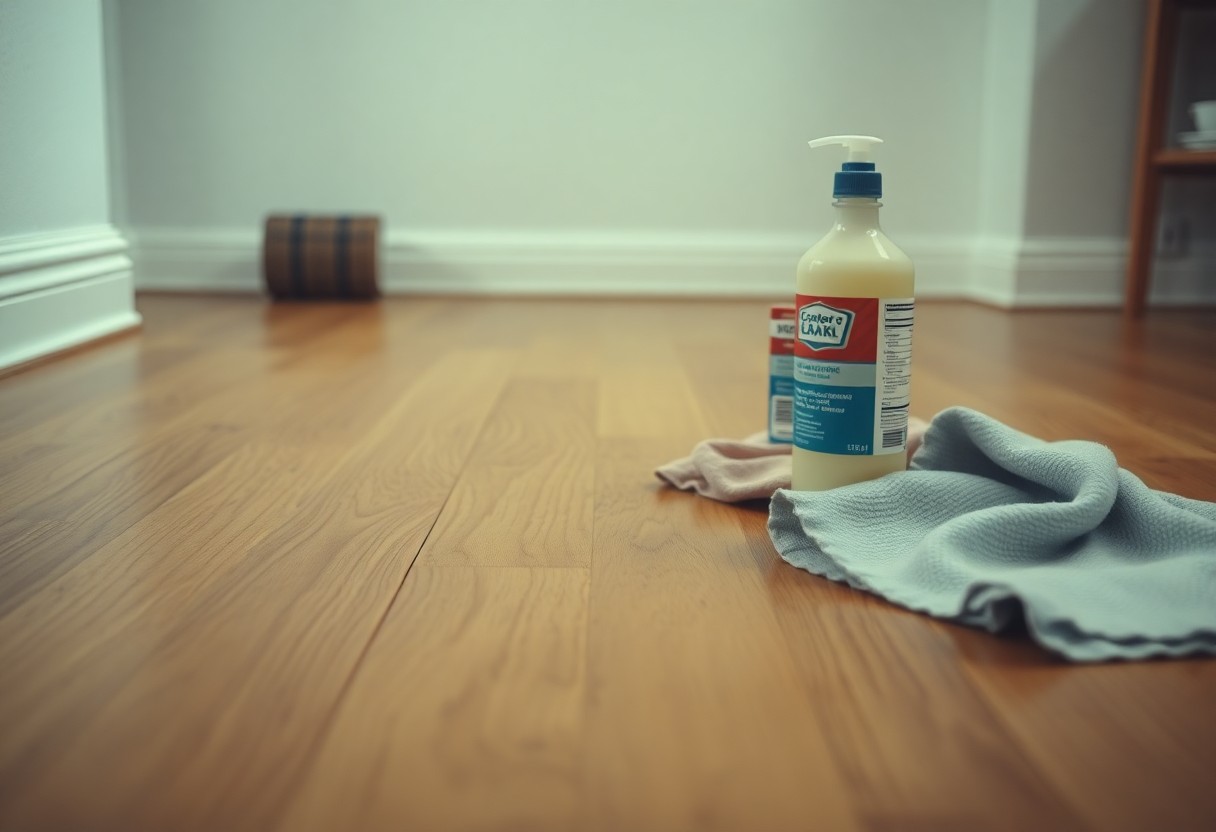Flooring is a significant investment in your home, and white oak offers both beauty and durability. To preserve its elegance and extend its life, you need to adopt proper maintenance practices. This guide provides you with expert tips that will help you maintain your white oak flooring in pristine condition, ensuring it remains a stunning centerpiece in your living space for years to come.

The Chemistry of White Oak: Why Care Matters
Understanding the chemistry behind white oak helps clarify why maintaining it is important for longevity. The unique cellular structure of white oak contains tyloses, which makes it more resistant to moisture compared to other woods. This natural trait requires your attention, especially in varying environmental conditions. Regular upkeep ensures that the finish retains its protective qualities, preserving the wood’s strength and aesthetic appeal while further enhancing its resistance to decay and wear over time.
Understanding the Unique Characteristics of White Oak
White oak’s distinctive features include its impressive hardness, natural resistance to moisture, and rich, warm color. The grain patterns are visually striking and can evoke elegance in any space. This wood’s density contributes to its durability and makes it an ideal choice for high-traffic areas. Furthermore, its ability to take stain exceptionally well allows for a variety of design aesthetics, from modern to traditional, ensuring that your flooring remains timeless.
The Impact of Environment on Longevity
Your white oak flooring’s longevity is heavily influenced by environmental factors. Fluctuations in humidity and temperature can lead to expansion and contraction of the wood, causing cracks and gaps over time. Maintaining consistent indoor humidity levels between 35-55% helps mitigate these effects. Additionally, excessive sunlight can fade the color of your floor; using curtains or UV-resistant treatments can help protect against this inevitable wear.
In areas with high humidity, it’s especially vital to use a dehumidifier to maintain stability in your flooring. For instance, regions prone to dampness can lead to warping and even mold growth if not suitably managed. On the other hand, dry climates may necessitate regular moisture treatments to counteract drying effects. Regular monitoring of these environmental conditions will allow you to take proactive measures, ensuring that your white oak flooring stands the test of time and remains a beautiful asset in your home.
Daily Practices for Pristine Floors
Establishing a daily maintenance routine can vastly improve the appearance and longevity of your white oak flooring. Regular sweeping or vacuuming to remove dirt and debris prevents scratches and keeps your floors looking pristine. Additionally, using a damp microfiber mop once a week helps to collect dust and grime effectively without leaving excess moisture that could warp the wood grain or finish. Investing a few minutes each day into caring for your floors pays off in the long run, reducing the need for more intensive cleaning down the line.
Effective Cleaning Techniques to Avoid Damage
Avoiding damage to your white oak flooring comes down to the cleaning techniques you use. Always opt for soft-bristle brooms or vacuums equipped with felt tips to eliminate debris, as bristles that are too stiff can scratch the surface. When mopping, ensure that your cloth is just damp and not soaking wet, as excess water can seep into seams, leading to potential warping or swelling.
Choosing the Right Cleaning Products
In the context of selecting cleaning agents for white oak, the right choice can make all the difference. Look for pH-neutral cleaners specifically designed for hardwood floors to avoid damaging the finish. Steer clear of harsh chemicals, wax-based cleaners, or those containing ammonia, as they can strip away the protective layers and mar the beauty of your flooring.
Choosing pH-neutral cleaning products specifically formulated for hardwood is important for avoiding damage. Brands like Bona and Murphy offer gentle yet effective solutions that clean without harsh ingredients. Additionally, pour only a small amount of cleaner into a bucket with warm water, mixing it well before applying it with your damp mop. Always conduct a spot test in a less visible area to ensure compatibility with your floor’s finish, conserving its natural beauty for years to come.
The Role of Humidity: Balancing Moisture Levels
Humidity levels in your home play a significant role in the health and longevity of your white oak flooring. Fluctuating moisture can cause the wood to expand and contract, leading to gaps, warping, and other forms of damage. Maintaining a consistent humidity level between 30-50% ensures that your flooring remains stable and visually appealing, allowing it to withstand the tests of time and wear.
How Humidity Affects Your Flooring
As humidity increases, the wood absorbs moisture, often resulting in swelling. Conversely, low humidity can lead to drying out, which can create unsightly gaps between the boards. These changes not only affect the integrity of your flooring but can also impact its finish, making it more susceptible to scratches and blemishes. Understanding this dynamic allows you to manage your living environment better.
Tips for Maintaining Optimal Indoor Conditions
To keep humidity levels in check, consider using a hygrometer to monitor the moisture in your home. Implementing the right strategies will help create a stable environment for your flooring. You should:
- Utilize humidifiers or dehumidifiers as needed to balance moisture.
- Insulate your home and windows to prevent drafts.
- Vent appliances properly to reduce excess humidity.
- Regularly check for leaks in plumbing that could raise indoor moisture levels.
- Thou shall establish a consistent routine for climate control throughout the year.
Controlling indoor humidity does not need to be an overwhelming task. You can start by setting your HVAC system to maintain steady temperatures, while also investing in devices like humidifiers for winter months and dehumidifiers in summer. Also, close windows on humid days to minimize moisture infiltration. By adopting these habits, you will foster an environment conducive to the preservation of your white oak flooring.
- Seal windows and doors to prevent moisture entry.
- Keep ventilation systems clean and in good working order.
- Check the humidity levels regularly to stay ahead of fluctuations.
- Use natural rugs or floor mats to protect against spills.
- Thou shall commit to these actions for lasting flooring beauty and stability.
Preventative Measures: Protecting Your Investment
Taking proactive steps to shield your white oak flooring is imperative for extending its lifespan and maintaining its beautiful finish. Small adjustments, such as being mindful of the footwear worn indoors and maintaining an ideal humidity level, can prevent unnecessary wear and tear. Regular maintenance routines, including cleaning and inspecting the floors for signs of damage, allow you to address issues before they escalate, ensuring that your investment continues to shine for years to come.
Utilizing Rugs and Mats to Reduce Wear
Strategically placing rugs and mats in high-traffic areas not only enhances the aesthetics of your home but also serves as a buffer against scratches and abrasions. For entryways and hallways, opt for durable, easy-to-clean mats that can trap dirt and debris, preventing them from being dragged across your beautiful floors. By incorporating rugs, you significantly diminish the likelihood of surface damage and maintain that fresh, pristine appearance over time.
Importance of Furniture Pads and Their Proper Use
Using furniture pads is a simple yet effective way to protect your flooring from scratches and dents caused by heavy furniture. These pads create a cushion between the floor and furniture legs, allowing for easier movement without compromising the floor’s integrity. Always ensure that pads are clean and in good condition, as dirt or debris trapped beneath them can cause more harm than good. Regularly check and replace worn-out pads to keep your floors looking their best.
Each piece of furniture should have the appropriate pad size and thickness to accommodate its weight and leg dimensions. For instance, heavier furniture, such as sofas and bookcases, might require thicker and larger pads for optimal protection. Soft felt pads are great for preventing scratches, but if your furniture is heavy or moves often, consider adhesive rubber pads which provide a stronger grip and greater stability. By investing time in understanding and strategically using furniture pads, you can showcase your white oak flooring’s beauty while ensuring its durability.
Professional Maintenance: When to Call in Experts
Engaging a professional can elevate your white oak flooring maintenance routine, especially when you’re unsure about the extent of wear and tear. Hiring experts ensures not only that your floors are thoroughly cleaned and maintained but also that any potential issues are identified before they escalate. Whether it’s routine maintenance or specific concerns, the right professionals can enhance the durability and aesthetics of your flooring.
The Benefits of Regular Professional Inspections
Regular professional inspections provide you peace of mind and protection for your investment. These inspections help uncover hidden problems such as moisture damage or structural issues early on, allowing for timely intervention. With experts’ trained eyes, you gain access to specialized knowledge and techniques tailored to keeping your white oak flooring in prime condition, ensuring it stands the test of time.
Refinishing and Repair: Knowing When It’s Time
Over time, you may notice scratches, dents, or dullness in your white oak flooring, indicating it might be time for refinishing or repair. Experts often recommend refinishing floors every 5-10 years, depending on traffic and wear. When the surface finish begins to degrade or you see significant wear, these signs can serve as critical cues to preserve your flooring’s integrity.
Assessing the need for refinishing involves looking at the condition of your floor closely. If you can see the wood itself, it’s likely time to act. Additionally, if your floor has become dull even after regular cleaning, professional refinishing can restore its original luster and beauty. During this process, experts can also address any deeper structural issues, ensuring your floors not only look good but are structurally sound for years to come.
Summing up
Summing up, to ensure the longevity of your white oak flooring, consistently maintain it by following expert advice. Regular cleaning with appropriate techniques, using protective pads on furniture, and managing humidity will keep your floors looking their best. Additionally, periodic refinishing can help restore their original beauty. By paying attention to these practical tips, you can enjoy the elegance of your white oak flooring for many years to come.

